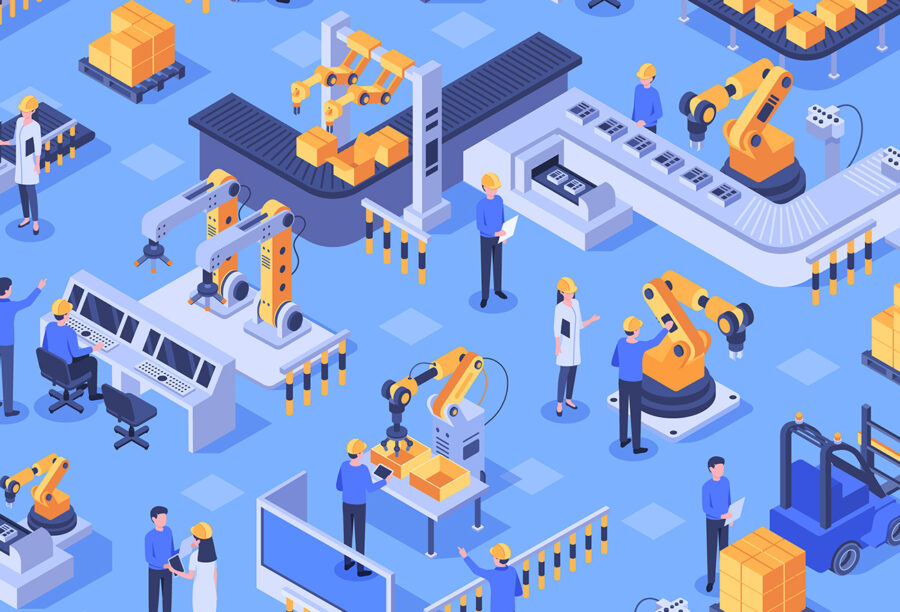Henry Ford was onto something.
In 1914, the automaker began paying his factory workers $5 a day for eight hours of work on the assembly line. Although Ford had refined mass production to make it more efficient, he still needed employees to show up and stick around. The generous wage, equivalent to about $148 today, was meant to keep workers coming back.
A recent Wharton study measuring the effect of worker turnover on the quality of smartphones made in China proves what Ford probably realized more than 100 years earlier at his car plant in Michigan: A stable workforce is valuable, even in a factory setting where so much of the labor is de-skilled.
“Ford created an automated system of work, but he recognized that to perform at a high standard the system involved having workers whose work is interconnected,” said Ken Moon, a Wharton professor of operations, information and decisions. “From his actions, I kind of suspect that he knew what we found in this study.”
Moon is co-author of the paper titled, “The Hidden Cost of Worker Turnover: Attributing Product Reliability to the Turnover of Factory Workers.” It was also written by Prashant Loyalka, an associate professor at Stanford University’s Graduate School of Education; Patrick Bergemann, assistant professor of organization and management at the University of California Irvine’s Paul Merage School of Business; and Joshua Cohen, a philosophy scholar who is on the faculty at Apple University.
“When you have a lot of turnover, you may be able to replace people easily and quickly, but a team is still more than the sum of its parts.”
The researchers partnered with a major Chinese manufacturer to track the failure rates for 50 million cellphones over four years of consumer use. When a device failed — defined as needing repair or replacement — they were able to trace the unit back to the exact date and location where it was assembled, the factory conditions, and the staffing level at the time.
Employee Turnover Cost Correlations
With such precise data, the researchers uncovered some significant correlations:
- Each percentage-point increase in the weekly turnover rate for workers increased product failure by 0.74% to 0.79%.
- Failure was 10.2% more common for devices produced in the high-turnover weeks following payday, which was once a month, than for devices produced during the lowest-turnover weeks immediately before payday.
- In other weeks, the assembly lines experiencing higher turnover produced an estimated 2% to 3% more field failures on average.
- The associated costs amounted to hundreds of millions of dollars.
The authors say their study is the first to link worker turnover directly to product reliability in the manufacturing sector, and the results emphasize that there is a lot more for managers to consider about worker turnover than just the budget-line costs of recruiting and training replacements.
“That’s the wrong way to think about it,” Moon said. “When you have a lot of turnover, you may be able to replace people easily and quickly, but a team is still more than the sum of its parts. Workers on an assembly line aren’t necessarily collaborating in a deep way, but their work does affect other stations. Their ability to coordinate is more important than we think.”
Moon said the study captured the rapt attention of the company, which prides itself on quality and reputation. It operates a massive factory the size of 90 football fields with thousands of workers and dozens of contract suppliers, so efficiency is key. Something as routine as a shift change is a major undertaking. That’s one reason why the company has rigorous product testing, warranties, and standardized training for workers to surmount the employee turnover rate, which is 300% to 400%.
“It’s about reshaping workflows instead of trying to reshape people.”
“The team we collaborated with had two reactions to the data findings. One, they realized that there is a connection and it’s more obvious than we thought. And two, they all started to run the numbers in their heads,” Moon said.
The paper’s authors write that their findings prove that companies can “substantially benefit” by raising compensation and improving work conditions to retain a stable employee base. Flexibility and standardization are critical to factory production, Moon said, but so is retention.
“What we find from the data is that if you take an experienced person who left the line and find an equally experienced person and plug them in, it’s actually disruptive. That person who left has some knowledge that’s not easily replaced,” he said. “Even though an assembly line is not a deeply collaborative workplace, there is still a need to coordinate with those around you. And that matters.”
Moon is continuing to study the role of employee turnover beyond factory settings, where working conditions can be very different. The idea came from the traceability of the cellphones, which unleashed a treasure trove of data. He’s been putting bio sensors on hospital nurses who work in high-stress intensive care units to trace stress during their work flows. He wants to use the information to find connections between work and burnout, with the ultimate goal of helping to retain nurses. A recent McKinsey & Company report estimates a shortage of up to 450,000 nurses in the United States by 2025.
“We’re chasing the idea of, ‘Let’s measure it.’ Let’s not let the workplace be a black box where we don’t see inside,” Moon said. “Putting sensors on folks is something to do very carefully and conscientiously, but can it lead us to do better? It’s about reshaping workflows instead of trying to reshape people.”



